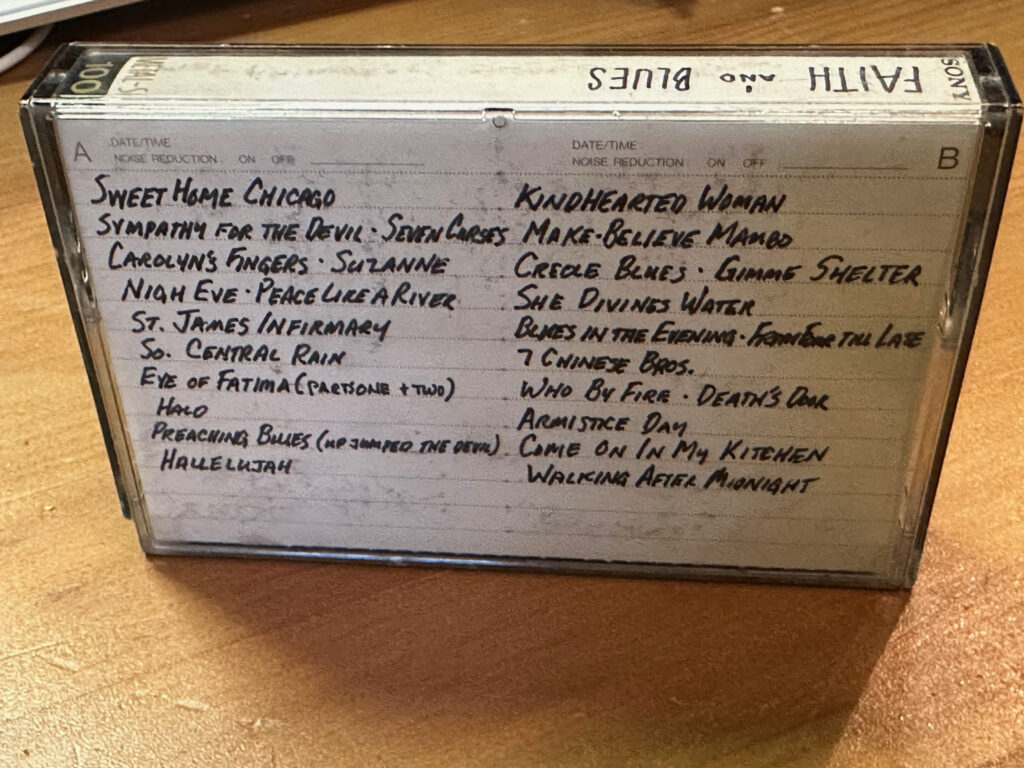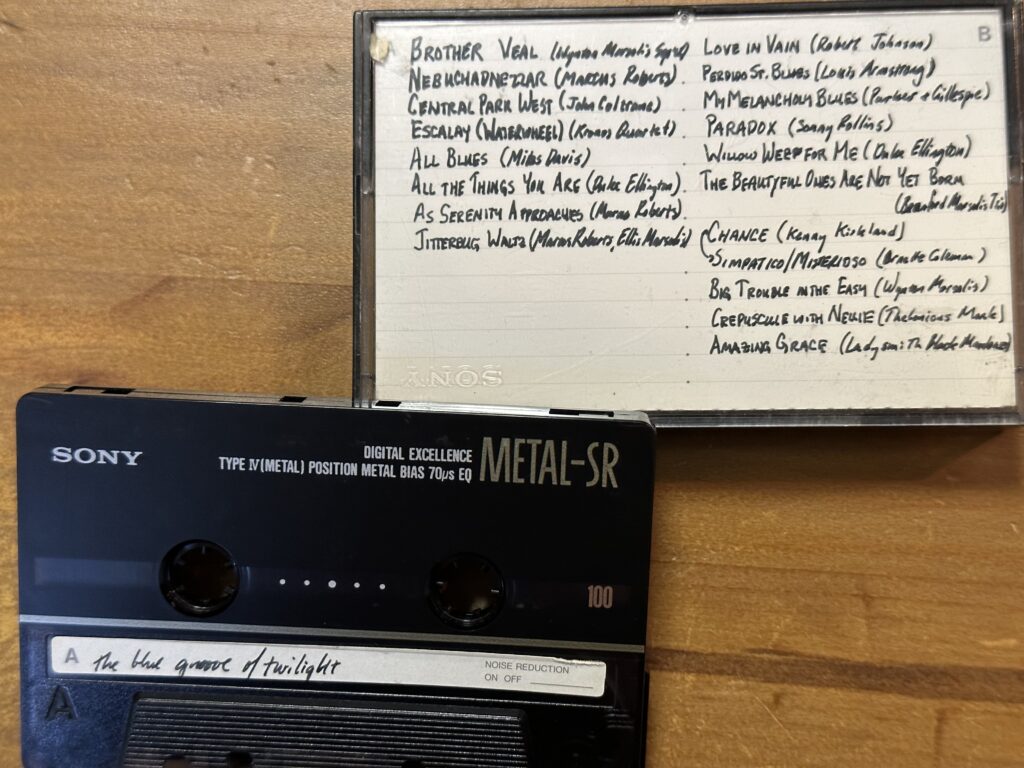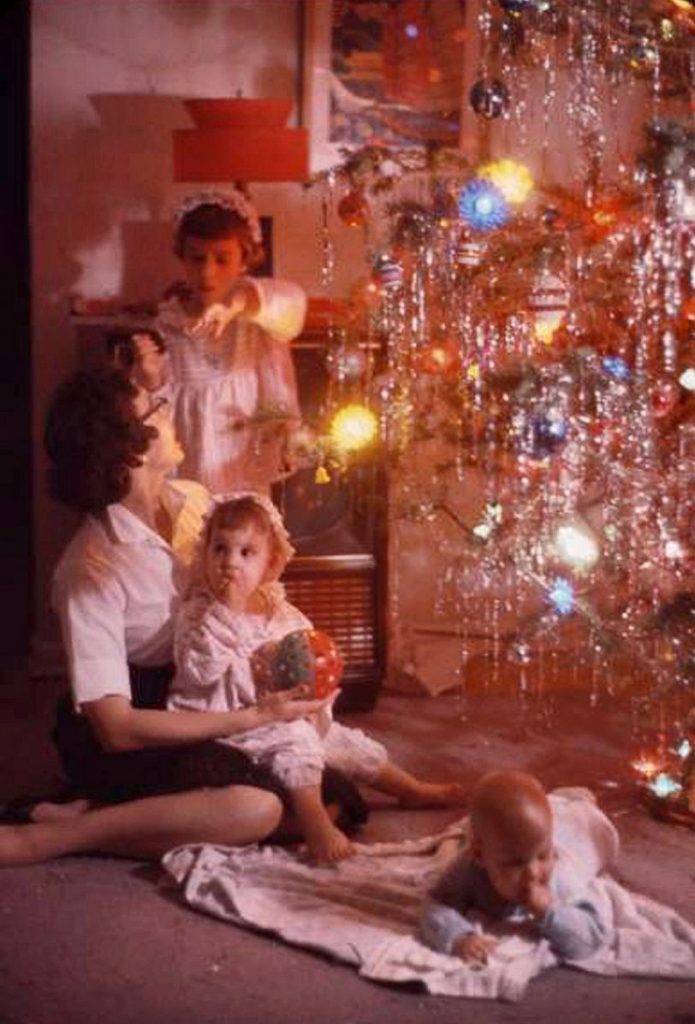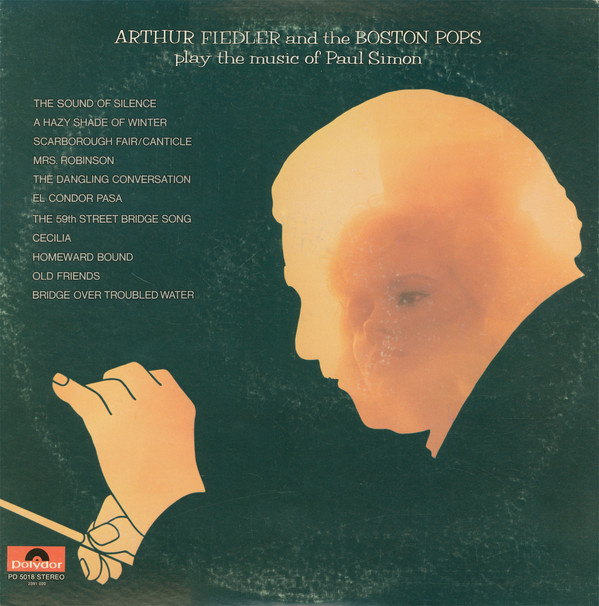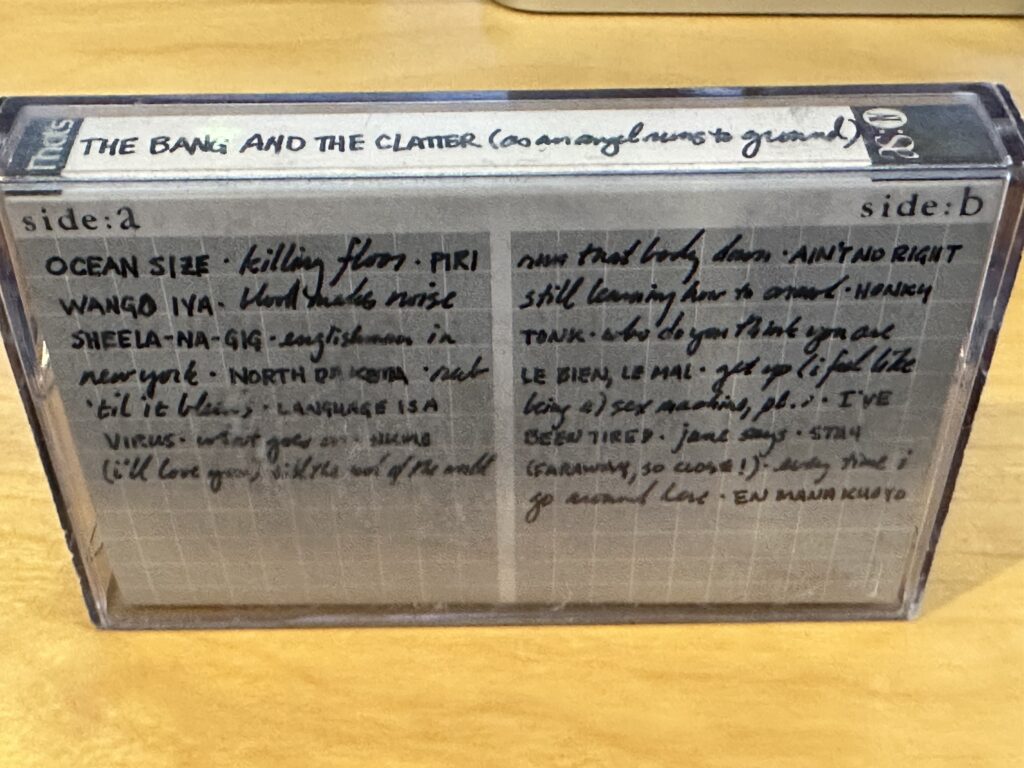
In the summer of 1993, I was on top of the world. Having finished a great Glee Club season and gotten a literary magazine off the ground, I had just gotten a room on the Lawn and was staying in Charlottesville for the summer as an undergraduate assistant in a physics lab. I had just started listening to the funkier side of James Brown and was starting to discover blues, hip-hop and world music. Plus, I now had wheels, in the form of an incredibly fun but unreliable 1977 MGB.
This mixtape, accordingly, was shaped by all these factors, perhaps not least of all by the last. Most of the selections on this mix were chosen because they sounded great in the MGB with the top down. That was certainly true of “Ocean Size,” the opening track. After ignoring Jane’s Addiction for many years, I finally got into them about two years after they had broken up. This was a version of Los Angeles rock I could get behind—something like heavy metal for art students. And the lead-in to Hubert Sumlin’s slashing guitar on the great “Killing Floor” remains a potent link from the first song to the second. I had first picked up the Chess blues sound from a phenomenal box set of Willie Dixon recordings, and then this 1965 Chess anthology of Howlin’ Wolf’s work, which had just been reissued on CD. (It’s with no shame that I note that my first exposure to the title of this track was in William Gibson’s short story “Johnny Mnemonic,” where he borrows the phrase and puts it to an entirely different purpose.)
On the strength of Peter Gabriel’s early Real World compilation Passion Sources, I started to branch out and find other artists on the label. The African artists on the label, such as Geoffrey Oryema and Ayub Ogada. Oryema’s “Piri Wango Iya” is a great introduction to the Ugandan’s sound, featuring only his voice and the traditional Ugandan lukeme (a gourd with plucked resonating metal strips).
I was still working my way through Suzanne Vega’s phenomenal 99.9 Fº, and “Blood Makes Noise” was just the sort of twitchy dance that I could get behind. Likewise PJ Harvey’s “Sheela-Na-Gig,” which even then struck me as a striking reversal of traditional gender politics, with Harvey’s narrator confidently offering herself sexually to a man who flatly rejects her as an exhibitionist and is terrified of being dirtied by her. We hadn’t explicitly covered Freud’s take on what would now be called the Madonna-whore complex when I read him in my first year, but it was a pretty clear illustration.
Then follows, for some reason, “Englishman in New York,” a track which I love by itself but which doesn’t flow very well here. Then “North Dakota.” I never had listened to much country music, but a friend who came to visit that summer left me with an aching heart, and a mixtape featuring this phenomenal Lyle Lovett song. “If you love me, say I love you” sounds like the loneliest thing ever, and it resonates at the heart of this tape once you peel back everything else.
I wasn’t emotionally mature enough to acknowledge or linger in my feelings, but I was more than capable of irony, and PJ Harvey was always there to help, as was the gently mocking narrator of Laurie Anderson’s “Language is a Virus.” Self-mockery always made me feel better, so it was a good transition from there into “What Goes On” and “Numb,” which may have been the first U2 song that made me laugh. Ditto the over-the-top apocalyptic Western of Nick Cave’s track from Until the End of the World, another third-year frequent rotation CD that I was still digesting.
The end of this summer, when I was starting to put this mix together, was a rough one physically, and I was starting to feel ragged and tired around the edges. When I came home at the end of the summer for a few weeks before school started, I realized why — I had contracted mononucleosis, probably as a consequence of the close living quarters in the student apartment that was my home for the summer. (While I was dating someone that summer, we only spent a few days together as she was off doing her own things, so I’m pretty sure I didn’t get the “kissing disease” the fun way.) “Run That Body Down” accordingly became my theme song. It’s a good thing I didn’t know then how rundown a body could actually get…
More feelings avoidance, more loud rock! I still love “Ain’t No Right,” though not as much as I love the downtempo shift that follows it. I listened to For the Beauty of Wynona for the first time with a good friend and neighbor who had good taste in music and confused my feelings (a common theme of my college years). And Lanois’ country-infused guitar had a natural connection, at least in my mind, to the freaked-out electric blues that Miles and his band pulled from thin air on “Honky Tonk.”
My immature late teenage feelings (okay, I was actually 20) loved getting lost in Elvis Costello’s Brodsky Quartet collaboration, and on no track was this more true than on “Who Do You Think You Are?,” a paean for those with a more active imagination than love life. And again, any time I felt actual feelings getting close to the surface, it was time for a shift of gears. I have always loved “Le Bien, Le Mal” ever since borrowing Jazzmatazz Vol. 1 (and the first Digable Planets album) from a neighbor in that crowded college apartment (thanks, Patrick!), but the name of the transition technique between the Elvis Costello track and this is called “discontinuity.” Once I found that groove, though, it was a logical connection to James Brown, whose “Get Up (I Feel Like Being A) Sex Machine” had soundtracked a memorable party a few months prior in an apartment full of physics students, quality porter and stout, and someone’s incredible record collection (including, oddly, Speak No Evil).
I didn’t always know how to end mix tapes then, so there’s no real through line for the last few tracks. But “En Mana Kuoyo” is a fine closer, a brightly percolating groove from Kenya that transported me to another place. I hope it does the same for you.
Full track listing below:
- Ocean Size – Jane’s Addiction (Nothing’s Shocking)
- Killing Floor – Howlin’ Wolf (The Real Folk Blues)
- Piri Wango Iya – Geoffrey Oryema (Exile)
- Blood Makes Noise – Suzanne Vega (99.9 F°)
- Sheela-Na-Gig – PJ Harvey (Dry)
- Englishman in New York – Sting (Nothing Like The Sun)
- North Dakota – Lyle Lovett (Joshua Judges Ruth)
- Rub ‘Til It Bleeds – PJ Harvey (Rid Of Me)
- Language Is A Virus – Laurie Anderson (Home Of The Brave)
- What Goes On (Closet Mix) – The Velvet Underground (Peel Slowly and See)
- Numb – U2 (Zooropa)
- (I’ll Love You) Till The End Of The World – Nick Cave And The Bad Seeds (Until The End Of The World)
- Run That Body Down – Paul Simon (Paul Simon)
- Ain’t No Right – Jane’s Addiction (Ritual De Lo Habitual)
- Still Learning How To Crawl – Daniel Lanois (For The Beauty Of Wynona)
- Honky Tonk – Miles Davis (Get Up With It)
- Who Do You Think You Are? – Elvis Costello And The Brodsky Quartet (The Juliet Letters)
- Le Bien, Le Mal – Guru Featuring Mc Solaar (Jazzmatazz Volume 1)
- Get Up (I Feel Like Being A) Sex Machine – James Brown (Funk Power 1970: Brand New Thang)
- I’ve Been Tired – The Pixies (Come On Pilgrim)
- Jane Says – Jane’s Addiction (Nothing’s Shocking)
- Stay (Faraway, So Close!) – U2 (Faraway So Close)
- Every Time I Go Around Here – Frank Black (Frank Black)
- En Mana Kuoyo – Ayub Ogada (En Mana Kuoyo)
You can listen to (most of) the mix on Apple Music:

